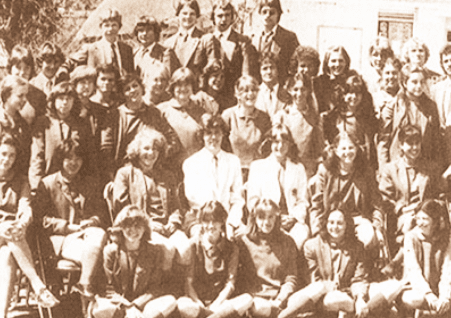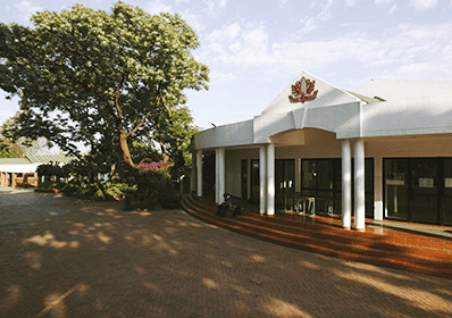Redhill’s over 115-year history is a rich tapestry made up of boldness of vision, courageous innovation, fierce commitment to diversity and inclusivity, and a cohesive and deeply committed community. With its passion for reimaging and redefining education, it is easy to forget that Redhill is one of the oldest schools in South Africa. That being said, while we have many meaningful traditions that are woven into the fabric of our school, we are most certainly not a traditional school.

Redhill’s roots date back to 1907 when St Winifred’s School for Girls was founded, occupying a small, double storey building in Yeoville, Johannesburg. Even during these early stages and during turbulent times, innovation and modernisation were at the core of the school’s ethos.
At the beginning of 1924, the school was relocated to Parkview where a new, ‘modernised’ building was erected, quickly transforming the school into a very successful and highly regarded educational establishment for girls.
In 1941, Catherine Hill became the Headmistress with a bold vision to completely transform and revitalise the school’s image, both physically and in the name. “St Winifred’s School for Girls” became “Redhill School”, named for the Headmistress and the vibrant colour of the new uniforms. It was here that our new “Free to Build” motto was born.
Towards the end of 1941, when many young mothers went to work during the war effort, Redhill opened a Nursery School, which was soon to become he first independent nursery school that was up to government standards in those days.
As a result of financial difficulties, Catherine Hill sought out more affordable premises for the school, finally settling on a group of rondavels in Morningside. In order to raise funds, Redhill School was registered as a company on 6 April 1946, and it was at this time that many parents agreed to serve on the Board of Directors.


Under Dorothy Thompson’s guidance, the school was not prepared to impose the restricted quota system on pupils of colour in order to qualify for a government grant. As such, it claimed to be an “undenominational school… that endeavours to build religious tolerance and mutual respect among individuals and groups with differing points of view”.
Amidst continuing financial difficulties, the school’s governing body approached Dr Isaac Kriel, the principal and majority shareholder of the Damelin Group, to take over the ownership and management of the school. In 1968, Redhill School officially came under the guidance of the Damelin Group in a widely publicised deal worth R300 000.
From that point onwards, Redhill underwent fundamental changes. From a girls’ school of 150 pupils, the numbers would increase over the next ten years to 630, including boys. Major progress would be made towards achieving academic excellence through a more traditional and rigorous approach to education.

Following a decision by Dr Kriel to depart from Redhill, the school came under the care of a Trust, which was registered in July 1979, and a Board of Trustees.
During the course of the 1980s, a number of black students were admitted into Redhill and a scholarship scheme was established to provide scholarships for them despite laws restricting black children from attending what was considered by the government as a ‘whites only’ school. Another crucial cornerstone of Redhill’s progressive educational philosophy was the notion of religious tolerance.


During this time, the school was significantly remodelled in the most extensive and sustained building programme in its history.

After a challenging century, Redhill has weathered many storms and grown to become one of the leading educational institutions in South Africa. It has overcome times of economic and financial hardship to grow from modest beginnings to a financially stable, innovative and progressive school. Yet, during both difficult and prosperous times, it has always attracted dedicated teachers and educational leaders who were prepared to take risks and challenge the ordinary.
Given the pace of technological and societal change, the need to embrace change as a constant and provide pupils with the skills to cope with it is vital. The promise of new growth and development and the willingness of the school’s new leadership to embrace change suggest that the next century of Redhill School will be even better than the first.